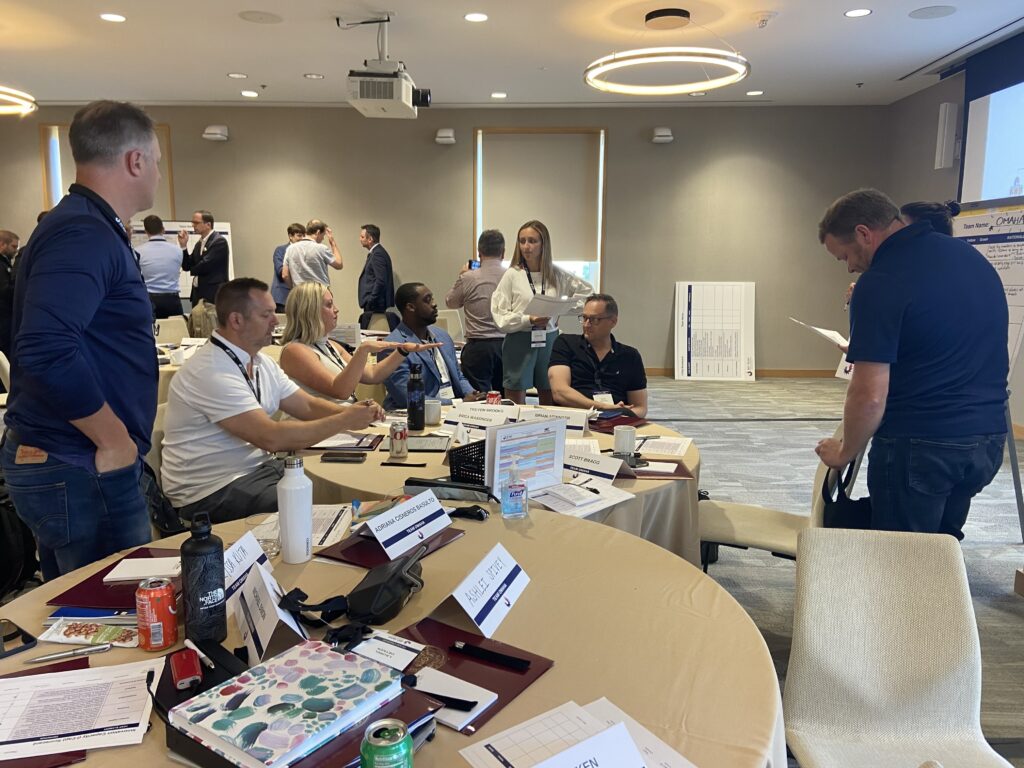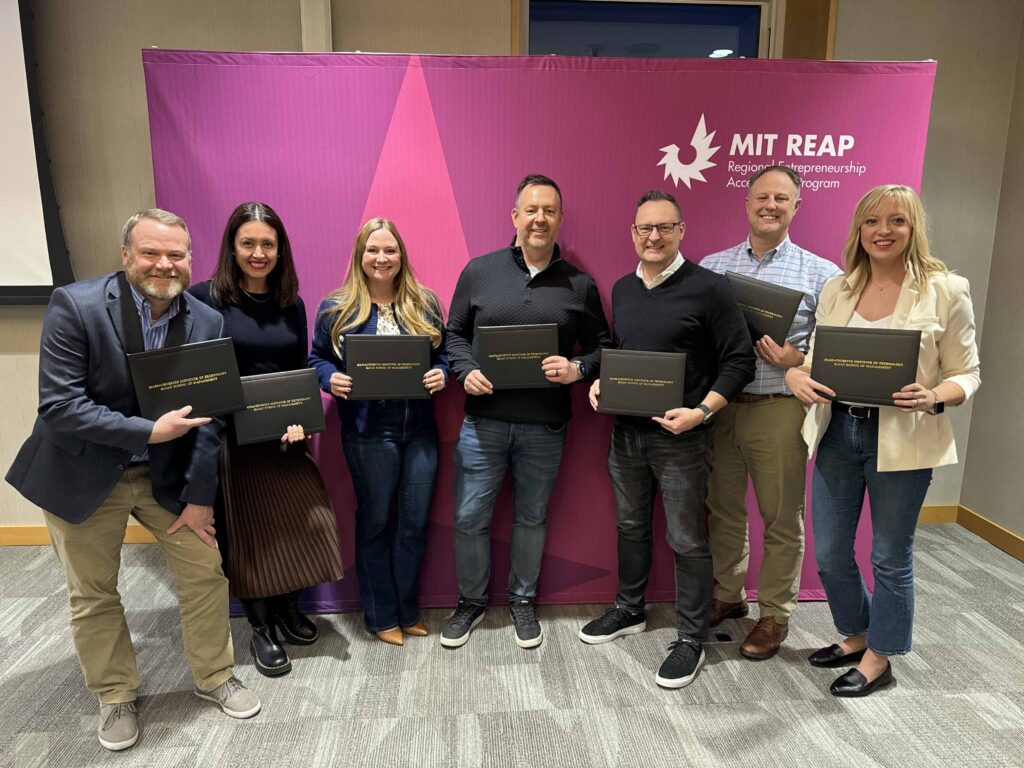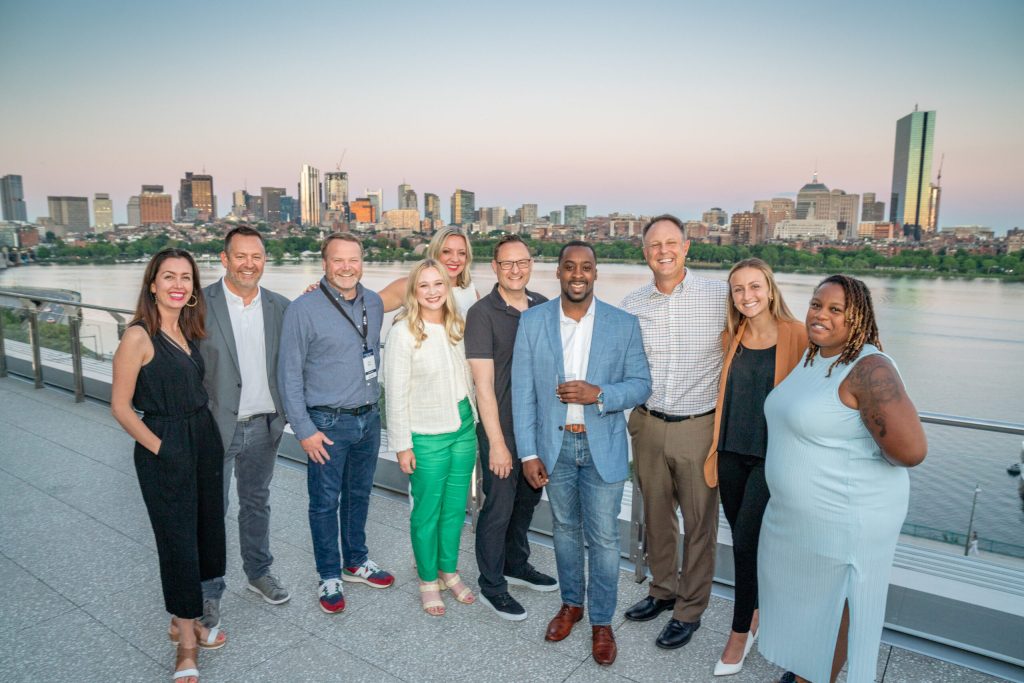Several years ago, when Adriana Cisneros Basulto pivoted from a corporate HR career to co-founding the HR startup Maxwell, she felt, in some ways, lost. “Starting something new is like, where do you go?” she said.
Many key moments came down to luck, like talking with someone who mentioned support programs that Cisneros Basulto had never heard of. “I remember when I first heard about the (Nebraska Innovation Fund) Prototype Grant, I was like, ‘What are you talking about?’ and they were talking about it as if I should know,” she said.
Bridging that gap, between startup founders and Nebraska’s resources, continues to be a challenge. That’s where the new nonprofit Open Range hopes to step in as a central convener for the ecosystem.
By virtue of being just a few months old, and the perhaps herculean task it’s trying to take on, there’s not much clarity around what, specifically, Open Range will be doing. But there is a larger throughline that can help explain why Open Range exists, shed light on its approach to Nebraska’s startup ecosystem and set some expectations for its work.
In part, the organization has its roots in the Massachusetts Institute of Technology’s Regional Entrepreneurship Acceleration Program (MIT REAP), which coaches cities and countries around the world to improve their startup ecosystems.
Open Range’s interim CEO, Joe Petsick, and its vice president of operations, Laurel Oetken, both were part of the Omaha-Lincoln cohort of MIT REAP from early 2022 through December 2023, along with a group of roughly 10 other community members representing Omaha and Lincoln.
MIT REAP was “definitely the nexus, I think, that started the discussion around ecosystem development, to kind of move it into a new space,” Petsick said.
Uncharted waters and a new focus on startups
The opportunity to work with MIT REAP came at a unique time for Nebraska. As in the rest of the country, the COVID-19 pandemic had reshaped the business world, from remote work to a tight labor market.
“Simultaneously, I always kind of look at this from a financial perspective: There’s just a ton of cash,” said Erica Wassinger, co-founder and general partner at Proven Ventures. Wassinger also participated in the MIT REAP cohort.
Nebraska investors were flush after WordPress managed hosting startup Flywheel was acquired in 2019. Then came Bain Capital’s investments in 2020 into construction software startup Buildertrend, and sports analytics platform Hudl. A record-setting stock market and the infusion of federal pandemic aid also didn’t hurt.
All of which led to more interest in startups, Wassinger said. “Investors are more liquid than ever, so there’s just so much interest in, ‘Where do I park cash that has a potentially high return?’” she said.
At the same time, the Greater Omaha Chamber was trying to figure out what its role should be in the new business landscape. It was also involved in the Heartland Civic Collaborative (HCC), a joint policy group with representatives from Des Moines, Kansas City and St. Louis.
As Oetken, then the chamber’s director of entrepreneurship and innovation, remembers, the HCC was approached by the Kansas City-based Kauffman Foundation. Did the four cities want to participate in a formal startup community-building program?
“It just made a lot of sense for where we were at that time,” Oetken said. After the “post-apocalyptic part of the pandemic, we’re settling into some normalcy within our community. And I think people were eager just for more connections and opportunities to grow the ecosystem.”
A Kauffman Foundation grant through the HCC supported each of the Midwest cities (Omaha combined with Lincoln to represent the broader metro region) as they joined MIT REAP. Other participants included Hungary, the Dominican Republic, the state of Western Australia in Australia and the Brazilian state of Piauì.
Experience and takeaways
MIT REAP is built around a framework representing five key stakeholders in any startup community: entrepreneurs, risk capital, corporate business, local government and universities.
The Omaha cohort, like others, had representatives from each group. Wassinger, for example, came from the risk capital side, while Cisneros Basulto was a voice for entrepreneurs.
Among the participants, there were common themes for why they got involved. MIT REAP was an opportunity to compare the Omaha and Lincoln startup scene to the rest of the Midwest and to learn from faculty at a pre-eminent institution about how to keep developing an entrepreneurial community.

Visiting the MIT campus in the Boston metro was eye-opening. There’s a thriving startup community in Boston interwoven with MIT, and witnessing it gave a sense of possibility to the Omaha cohort.
“Once you see it, you can be it,” said Trevon Brooks, who served as the chief strategy officer for the Nebraska Department of Economic Development while part of MIT REAP. “Sometimes in Omaha, you see some of the different things … but it’s hard to put your finger on it and realize that it can be reality. And all of a sudden, you go to MIT and you see some of the crazy, amazing things that are done, you’re like, ‘Ah, OK, some of that stuff can happen.’”
Another lasting takeaway: the stakeholder framework, which continues to shape how several participants think about the startup ecosystem years after the cohort’s end. To really make sense of Nebraska moving forward, though, the framework had an important update.
“One of the things that we came up with, both at MIT and carried over into Open Range, is that we created a sixth stakeholder group called philanthropy,” Petsick said. “We raised $500 million recently, in very short order, to rebuild (The RiverFront) downtown. Beautiful park. Glad we did it. But what would it take to raise a fraction of that (for) startups? What impact could that have?”
The ‘central convener’ snowball with Silicon Prairie Rising
The MIT REAP cohort did interviews and surveys with the Nebraska startup communities to figure out a must-win battle for local entrepreneurship. The cohort considered, as did other regions, focusing on specific industries. But that kind of narrow approach didn’t feel right given Nebraska’s business diversity.
Instead, the group settled on a different issue: the silos of different Nebraska stakeholders and how that can make an environment inaccessible to new entrepreneurs.
“Everyone means well, but they keep doing their day job, because it doesn’t go away,” said Michael Dixon, the CEO of UNeMed and another MIT REAP participant. “Finding a way to create connectivity throughout an ecosystem that wouldn’t take people away from their day job … would be really valuable. And it would allow maybe easier entry for entrepreneurs, and then better access to some of (Nebraska’s) resources.”
The final MIT REAP report, then, focused on the need for Nebraska’s startup ecosystem to have a central convening organization. Years later, the cohort continue to support the idea.

The recommendation was also carried over to a parallel initiative started up during the MIT REAP cohort: Project Sandbox, convened by Millwork Commons developers Paul and Annette Smith. Sandbox helped launch the Silicon Prairie Rising report in early 2025 — which included another call for a backbone organization in Nebraska’s startup scene.
There was some overlap between MIT REAP and Sandbox, as Petsick was involved in both. The MIT REAP cohort’s documents and data were also given to the Sandbox group, and some members of the cohort were interviewed for what would become the Silicon Prairie Rising report.
Open Range then took shape from the Sandbox group in fall 2024 and launched earlier this year. For Petsick, the compounding recommendations for a central convener give a sense of clarity that, yes, Nebraska really does need this, and the ecosystem will support it.
“You have a group of people interviewed who all say this, you have consultants who go out and do a study and say this,” Petsick said. “You get this validation that occurs that gives you a much higher degree of confidence.”
Setting expectations
After the program, much of the MIT REAP cohort settled back into their jobs. But as they work, they continue to think differently about the startup community and the stakeholders needed to sustain it. They’re also watching with interest as Open Range builds on their work.
Oetken and Petsick being involved in Open Range “means that all that knowledge, all those learnings, are not lost,” Cisneros Basulto said. “I have high hopes for it … I trust that they’re going to be able to bring (together) the different stakeholders that they need in order for it to be successful.”
After all the previous work in MIT REAP and the Silicon Prairie Rising report, Petsick recognizes that the as-yet-unclear timeline for Open Range’s work can feel a little frustrating. As an entrepreneur himself, he sees the tension between the startup world, which operates on weeks and months, and the nonprofit world, which thinks of impact more in terms of years and decades.
“We need to get everyone facing the same cardinal direction,” Petsick said. “And that takes some time, especially when you have all these disparate things going on that had no coordination before. Everybody has their own agenda.”
Oetken said she hears “the perspective of, we need to continue to be more visible, but there’s a lot of conversations happening behind the scenes, too.”
To Oetken, MIT REAP offered an opportunity for key members of the Nebraska startup world to step outside their niches and have hard conversations about what is and isn’t working here — namely, how difficult it continues to be for entrepreneurs to get started. Open Range intends to continue that work.
“Sometimes, we’re afraid of having those hard conversations of where resources are at,” Oetken said. “I think we have the opportunity to be that kind of … neutral entity, to come in and say, ‘How do we help bridge these programs?’ Or, ‘How do we bring folks together where we’re making a bigger impact, and we’re not competing necessarily for the same level of resources?’”

